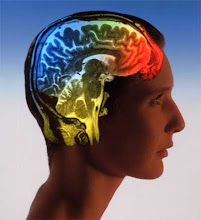Decay theory of forgetting is one which seems to cause confusion, perhaps because I presented it to you as a theory of forgetting in STM, but it has also been researched as a theory of forgetting in LTM.
The basic idea of decay is that when we encode a memory, a structural change takes place in the brain. Hebb (1949) argued that this trace (sometimes called an 'engram') is delicate, and liable to disruption over time unless further learning takes place. So, in short, if we don't practice/rehease learning, then it will fade and be forgotten. Decay means fading/crumbling of memories over a period of time.
However, research shows that procedural LTMs - skills such as driving a car - are not forgotten even if not used for many years. Additionally, memories sometimes spontaneously reappear, in dreams or if you have a bump on the head. This phenomenon suggests that the engram has not actually decayed, but some other process has caused forgetting.
An early piece of research by Jenkins & Dallenbach (1924) gave participants ten nonsense syllables to learn. Some participants went to sleep (this is a 'do nothing - no interference' condition) and others carried on with normal activities. The period spent asleep didn't result in greater forgetting, leading them to conclude that forgetting in LTM is not due to decay but due to interference of new information.
Similarly, Baddeley & Hitch looked at forgetting in rugby players. Some participants had played a large number of games over a season, and others had played fewer due to injury or suspension. The researchers found that the key variable affecting recall was the number of games played - again supporting the idea that memories suffer from interference rather than decay.
Evidence for decay in STM is better - Peterson & Peterson (1959) found that forgetting in STM was a function of time, with recall falling sharply over the course of 30 seconds. However, even this kind of research does not prove the role of decay. This is because to allow for other factors (especially displacement/interference), the participants would have to be doing nothing during the time period. In fact, they were doing a distraction task (counting backwards) to prevent them from rehearsing the items.
Subscribe to:
Post Comments (Atom)

No comments:
Post a Comment